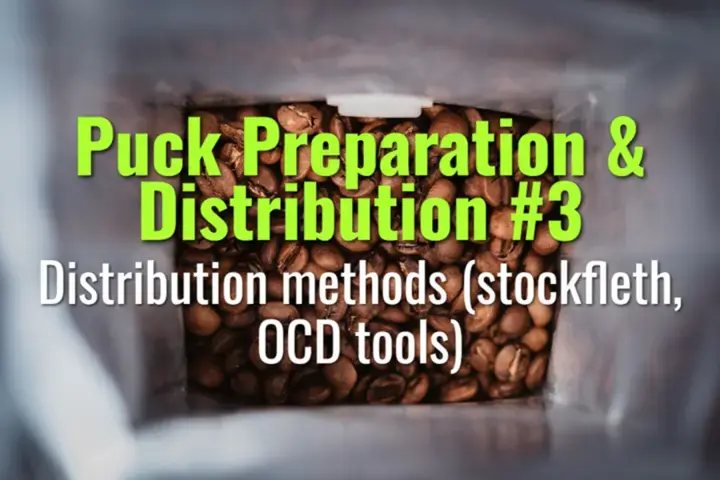Distribution methods (stockfleth, OCD tools)
The most common espresso distribution techniques—manual methods like Stockfleth’s move and mechanical tools like OCD—and how they influence puck uniformity.
- Coffee Basics Nerds
- 2 min read
Article 3 of 12 in Puck Preparation & Distribution/

Why Distribution Matters
- Uneven distribution creates density pockets in the puck.
- Leads to channeling, uneven extraction, and inconsistent flavor.
- Proper distribution ensures water flows evenly through the coffee bed.
Manual Methods
- Stockfleth’s Move:
- Rotate the portafilter while sweeping excess grounds with a finger.
- Levels the coffee bed and spreads grounds evenly.
- Low-cost, requires practice for consistency.
- Side Tapping:
- Lightly tap the portafilter to settle grounds.
- Helps but less precise; often combined with other methods.
Mechanical Tools
- OCD (Ona Coffee Distributor) and Similar Tools:
- Flat or ridged bases rotate across the coffee surface.
- Push and level grounds mechanically for consistent density.
- Adjustable depth for different doses.
- Pros: highly repeatable, fast, ergonomic.
- Cons: less effective if grind is clumpy (often paired with WDT).
Hybrid Approaches
- Many baristas use WDT first, then finish with an OCD tool or Stockfleth’s move.
- This combination ensures both declumping and surface leveling.
Practical Tips
- Choose a method that suits workflow and barista skill level.
- In high-volume cafés, OCD-style tools improve speed and repeatability.
- At home, Stockfleth’s move is effective with practice and no extra cost.
Summary
Distribution is a critical step in puck preparation. Manual methods like Stockfleth’s move offer skill-based control, while OCD-style tools provide repeatable precision. Both aim to achieve uniform density, reduce channeling, and ensure consistent, balanced espresso shots.